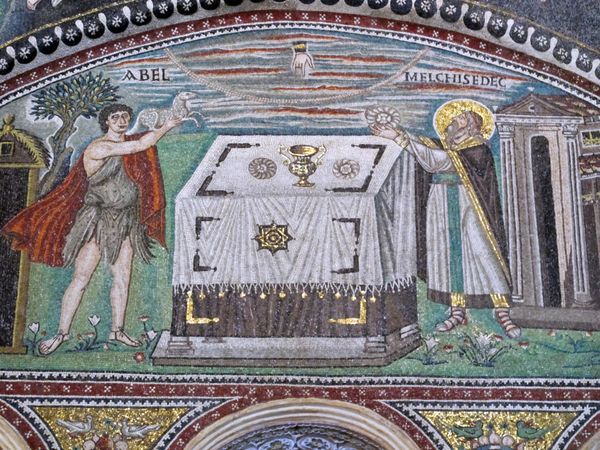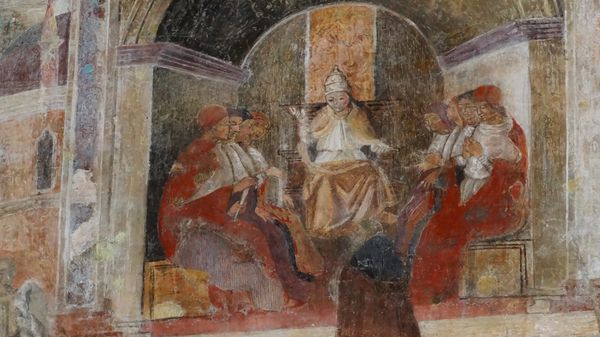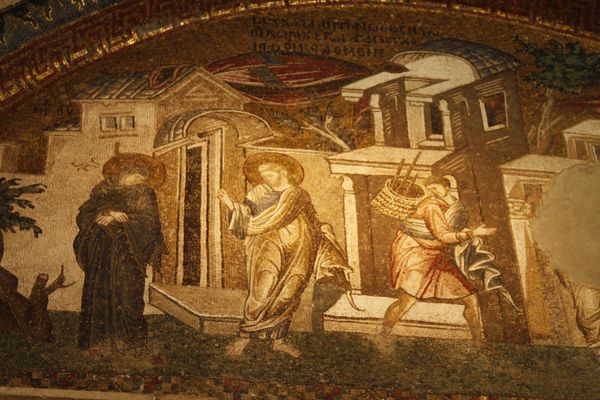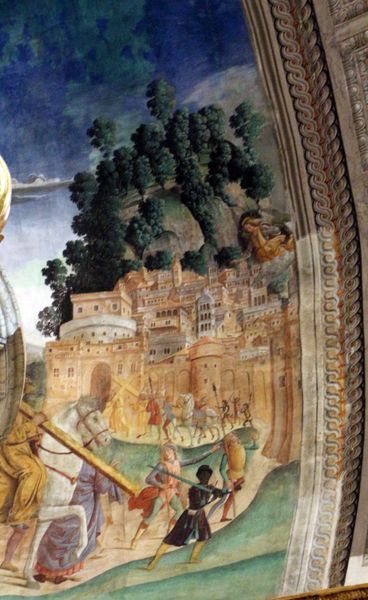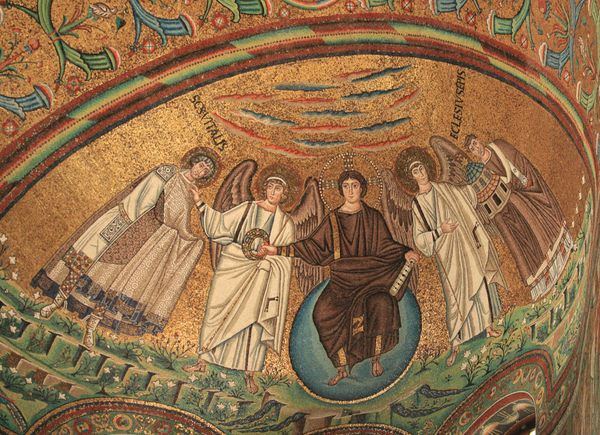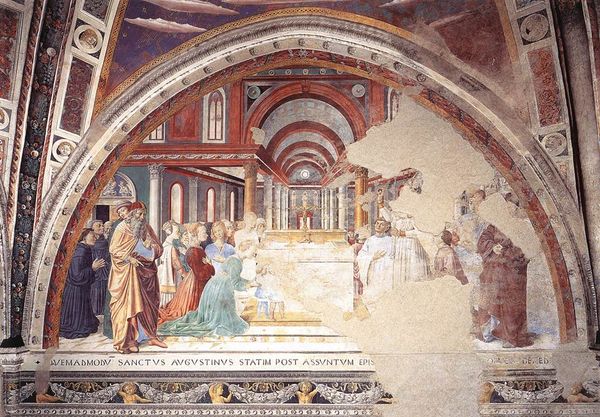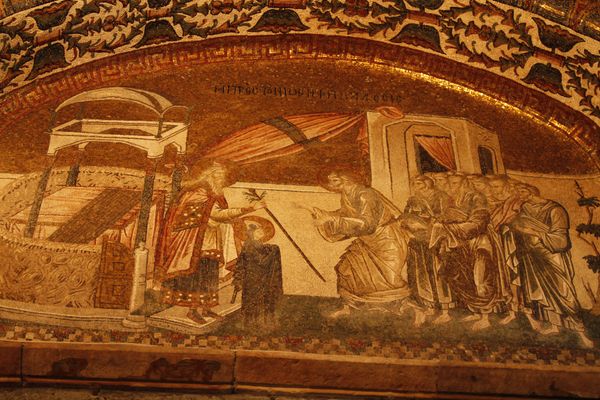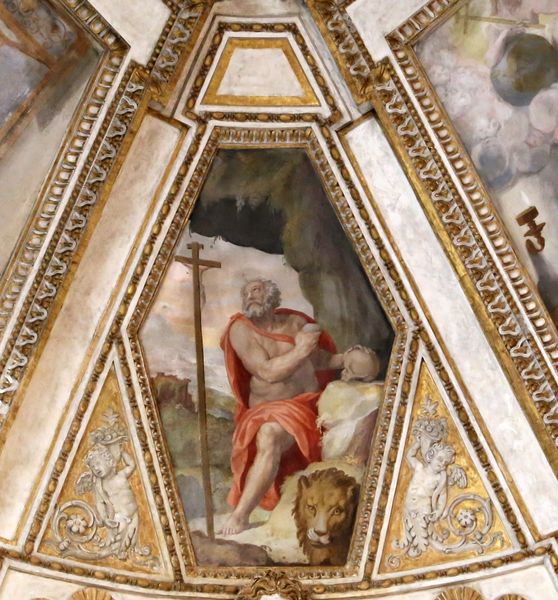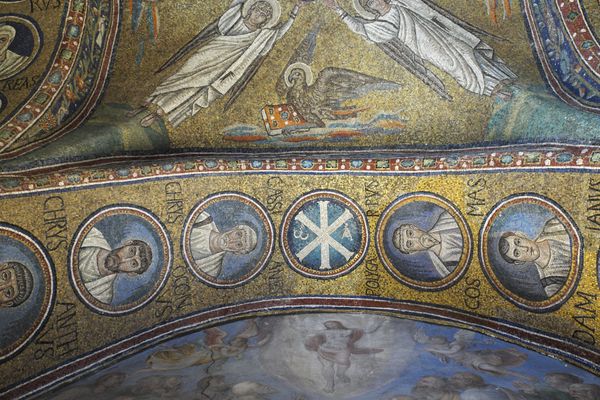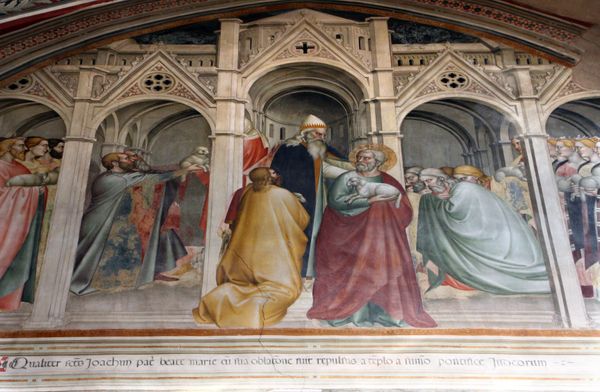
mosaic
#
mosaic
#
byzantine-art
#
medieval
#
figuration
#
history-painting
Copyright: Public domain
This mosaic, made by Byzantine artists, is found in the Mausoleum of Galla Placidia in Ravenna. The initial impression is one of rich color and stylized form, typical of Byzantine art. The composition is symmetrical, with two figures flanking a central object, possibly a reliquary or altar. Consider the mosaic's structure. The artists employ tesserae, small pieces of stone or glass, to create an image that transcends mere representation. The lines are deliberate, not attempting naturalistic curves, but rather defining shapes with clarity and purpose. The figures are rendered with a degree of abstraction, their drapery falling in rhythmic folds that suggest form without strictly adhering to it. The colour palette, dominated by gold, blue, and white, is not simply decorative. Gold represents the divine and ethereal, while the deep blues evoke the celestial realm. This choice reinforces the mosaic’s function within a sacred space. The mosaic's formal qualities point to a deeper engagement with symbolic language, asking us to consider how visual elements convey complex theological concepts. Its ongoing interpretation allows viewers to re-interpret the visual and cultural discourse.
Comments
No comments
Be the first to comment and join the conversation on the ultimate creative platform.
